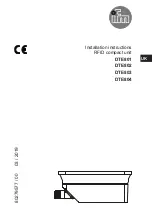
61
APPENDIX EIGHT:
CLARIFYING THE
BEVERAGE
Clarifying the beverage is important if you want to make a
beverage that looks like most commercial mainstream and craft
beers, ciders and meads. Some beverages styles are supposed to
be cloudy (e.g. some wheat beers, some ciders) and it also a matter
of personal preference whether you clear the beverage or not.
WHAT YOU ARE CLARIFYING
When you clarify with WilliamsWarn Clarification Agent, you are
removing two types of haze. The first is yeast cells that make
up most of the cloudiness and the second is (for beers, not fruit
beverages) haze proteins from the barley used to make the extract.
The clarification agent binds with both these components and
settles into the sediment bottle under the vessel valve. We
can then close the valve and remove this sediment at the right
moment and are left with a clear beverage in the vessel.
For beers it is important to cool the beverages to the minimum
1ºC/34ºF set-point to aid in the reaction of the clarification
agent with the chill haze proteins and then the yeast.
REMOVING THE NATURALLY SEDIMENT YEAST FIRST
After fermentation and once the beverage is at the dispense
temperature (cooled), we are ready to clarify the beverage.
There will be an amount of naturally sedimented yeast in the
sediment bottle. It is possible to clarify a new sediment layer
onto this naturally sedimented yeast, however we find that there
is an undesirable reaction between the two that slows down the
clarification process.
So our preferred method is to remove the naturally sediment
layer first to avoid these reactions. There will be some loss of
beverage depending on the yeast used, as not all the contents
of the sediment bottle will be yeast, but in all breweries there
is some “losses” in order to make a great beverage, so a small
amount of beverage loss is typical of the brewing process.
So for this reason we first remove the sediment bottle once the
beverage is cold and dump the naturally sedimented yeast.
PREVENTING OXIDATION
Once we have dumped the naturally sedimented yeast we need
to put the sediment bottle back on to catch the sediment that
will settle when we mix the clarification agent into the beverage.
However we do not want any oxygen to go into the beverage.
There are several ways to reduce air in the empty bottle. You
can add beer (from the bottom of the bottle) from the draft tap,
beverage foam (full of carbon dioxide) from the draft tap or add
carbon dioxide gas from the gas cylinder and purge the air out.
We prefer to add beverage foam from the draft tap. Beer
foam especially is very stable as it has foam proteins and
hops components, along with carbon dioxide, that keeps it in
formation for a period of time. We therefore fill the bottle with
foam before we put the bottle back on, to displace the air in the
bottle.
The foam is mainly carbon dioxide and contains no air so as it
fills the sediment bottle it will displace all air out of the bottle.
Fill it right to the top and even have some foam extending out
the top, to reduce adding any oxygen to the tank when you
reconnect the sediment bottle to the tank and open the valve.
This foaming is achieved by pushing the draft tap handle
towards the back of the unit, which is the foam mechanism
of the draft tap.
Technically there will be some very slight addition of oxygen
to the beverage at a parts per billion level, but it will not
be significant and will be absorbed by the yeast still in the
beverage. Oxidation is more pronounced after yeast is removed
from the beverage, which occurs when breweries pump filtered
beer around a brewery and when they package the clarified beer.
FORCING CLARIFICATION INTO THE BEVERAGE
Getting a good mixing of the clarification agent into the
beverage is critical. We do this by creating a pressure
differential between the vessel and the gas cylinder of 0.25 to
0.5 bar, whereby the gas cylinder has the higher pressure. We
then have the agent in the clarification pot and open the 3-way
valve on the tower which then connects the gas cylinder to the
pot and forces the agent into the beverage through a one-way
valve under the pot.
If the gas cylinder is 0.25 bar higher than the tank you will
achieve adequate mixing over 10 seconds, enough to clarify the
beverage. The bubbling that will be heard in the tank would be
termed “vigorous”.
However a pressure differential of 0.5 bar will create “very
vigorous bubbling” and that is why for beginners we suggest this
differential, to ensure clarification is achieved well in the very
first brew.
When you clarify for the first time it is important to hear the
bubbling in the tank so you can assess the amount of bubbling
and therefore mixing required for good clarification.
Содержание BrewMaster
Страница 3: ...PART ONE YOUR PERSONAL BREWERY...
Страница 14: ...PART TWO MAKING YOUR BEVERAGE WITH THE STANDARD BREWING METHOD...
Страница 39: ...PART THREE MAKING BEVERAGES WITH THE ADVANCED METHOD...
Страница 45: ...PART FOUR APPENDICES...
Страница 78: ...TROUBLE SHOOTING THE WILLIAMSWARN PERSONAL BREWERY...
















































